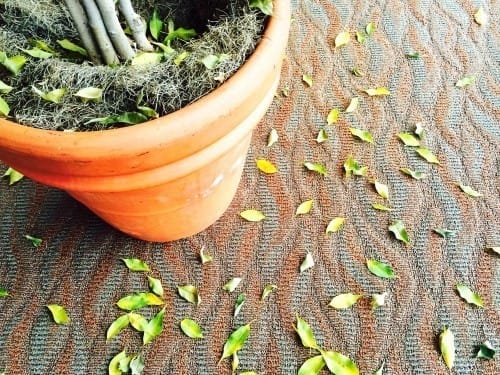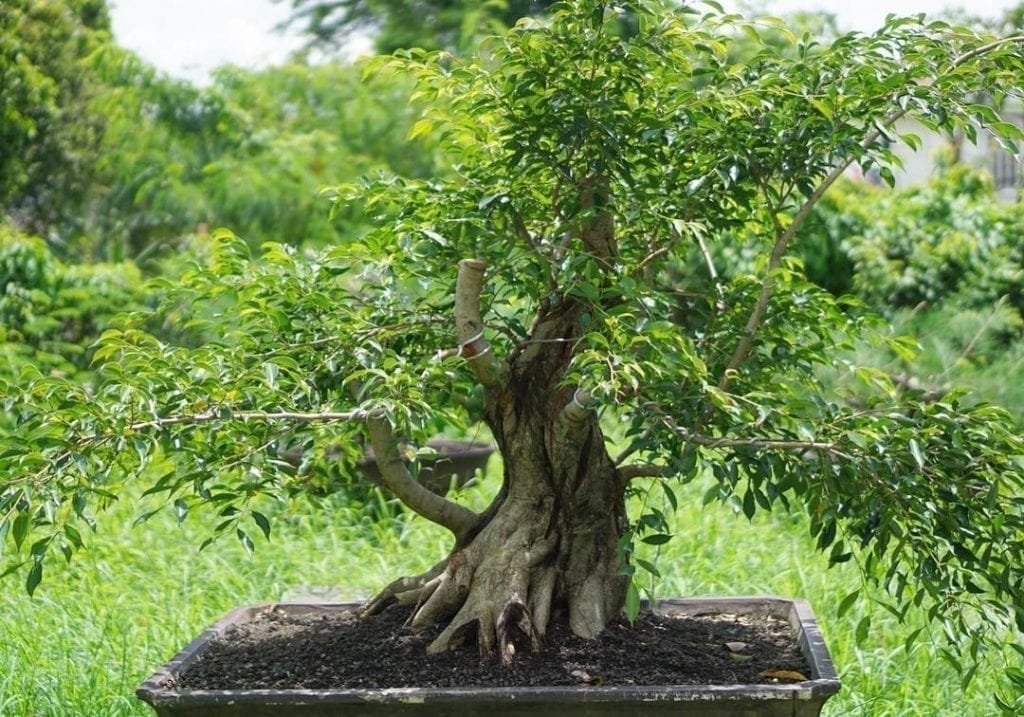No matter if you are a bonsai enthusiast growing miniature masterpieces outdoors or indoors, the health of your plants is of utmost importance.
Ficus bonsai plant species are considered the most suitable choice for beginner gardeners – they are naturally sturdy and highly resistant to a wide number of possible issues.
However, despite doing everything to ensure the well-being of your plants, it might be the case that challenges will appear along with your bonsai cultivation journey.
For those who wish to learn how to revive ficus bonsai losing leaves, the road to recovery is not a bumpy one – but it does require following the right steps and monitoring your plants carefully. After all, growing your own bonsai is a continual process of learning so there is nothing to be frustrated about.
Top Reasons that Cause Ficus Bonsai Leaves to Fall off

Quintessentially, all plants are living creatures. As such, they are sensitive to different factors that may interfere with their natural growth cycles, as well as unique needs and preferences.
With this in mind, there are no fit-them-all, magical formulas that will work equally well for reviving different ficus bonsai trees that keep losing leaves.
Fortunately, once you make your way through the top reasons for this particular issue, you can enjoy the shortest cut to helping your beautiful ficus plants return back to normal and further reach their fullest potential.
Video by Jamshed Asmi – How to make Ficus Bonsai (Bonsai # 2)
Source: youtube.com
1 – Improper Watering
Both under, as well as overwatering your ficus bonsai can lead to leaves falling off.
As a rule of thumb, water when the soil is only slightly dry about an inch deep.
It might be surprising to find out that plants can even get to suffer water stress. That’s how profoundly the watering schedule affects their well-being in multiple ways. As highlighted in a study titled Plant responses to drought and rewatering published in the journal Plant Signaling and Behavior, water stress causes the plants to respond by “dramatically complex mechanisms.”
Indoor ficus bonsai trees faced with overwatering are most probably planted in poor soil retaining too much water. In this case, the reason for falling leaves is actually root rot that remains hidden and invisible at a glance. Start watering your bonsai less frequently and transplant it into high-quality soil as soon as it regains its power.
With outdoor ficus bonsai trees, overwatering remains the most common reason for dropping leaves. Then again, it is a must to water your ficus bonsai only when the soil feels slightly dry.
If you’re dealing with under-watering, there might be no turning back to reviving your ficus bonsai. If consistently under-watered, the plants’ roots dry off and die. Because of this, there’s no use of any more watering since the tiny tree will not be capable of absorbing the water in the absence of healthy roots. A good reminder to not forgetting to water your bonsai babies.
2 – Poor Light
Issues related to ficus bonsai that loses leaves might be also due to poor access to light. That’s more common with indoor bonsai growing.
In most cases, outdoor bonsai trees growing is only done after carefully picking the most suitable location, so issues related to poor light are a rare occurrence.
Indoor bonsai gardeners have two options – either placing the bonsai tree in the very front of a window facing east or opting for indoor lights. In fact, it can be a great idea to do both.
Remember, a ficus bonsai tree needs plenty of light (no full sun or full shade, though). No light = inability for the process of photosynthesis to be accomplished, often resulting in plants losing leaves.
3 – Environmental Changes
Indoor ficus bonsai plants require a stable environment which is deprived of abrupt changes in temperatures and humidity. Ideally, you should keep room temperatures at about 15-20 degrees Celsius (60 degrees Fahrenheit) all year round.
Also, make sure not to place your ficus bonsai trees close to heaters, air conditioners or any spots where the airflow is further enhanced (for example, drafty windows or doors). If needed, you may take advantage of a humidifier or a dehumidifier depending on the season and the climate in your area of residence.
In cases when environmental changes are the reason for falling leaves, you may be able to spot that the leaves are yellowing, too.
4 – Pests’ Attacks
Dealing with pests is not what any bonsai tree gardener wants. But on the bright side, as far as reviving a ficus bonsai losing leaves is concerned, pests’ attacks are effortless to identify unlike issues related to watering, fertilization or environmental changes.
Inspect the leaves, the branches, and the stem carefully for signs of tiny invaders. Use a readily-available treatment solution (for instance, an insecticide such as Neem Oil) or mix your own DIY solution respectively.
Video by: Natural Ways – 4 Homemade Organic Pesticide Every Gardener Must Know
Source: youtube.com
5 – Inaccurate Fertilization
If you notice the leaves of your indoor or outdoor ficus bonsai slowly but steadily dropping off, inaccurate fertilization might be to blame.
With plants, it’s all about balance. Feeding to much or too little nutrients can be equally damaging.
On the bright side, if you suspect that it might be inaccurate fertilization causing your ficus bonsai to lose leaves, simply measure the pH of the soil and act accordingly by either increasing or reducing the amount of fertilizer you use.
The Takeaway

Image Courtesy of @bonsai.palapa [ Source ]
Like all living things, ficus trees have their own requirements in terms of proper light, possible environmental changes and watering routine, among others.
But with some very basic knowledge and observation, you can easily start “speaking” the language of your beautiful tiny plants.
Learning how to revive ficus bonsai losing leaves is only a fraction of the many lessons you can embrace on your journey towards becoming a better bonsai tree gardener. It’s a beautiful process of constant progress, so as long as you have the right mindset and love for your miniature plants – you are bound to succeed!


